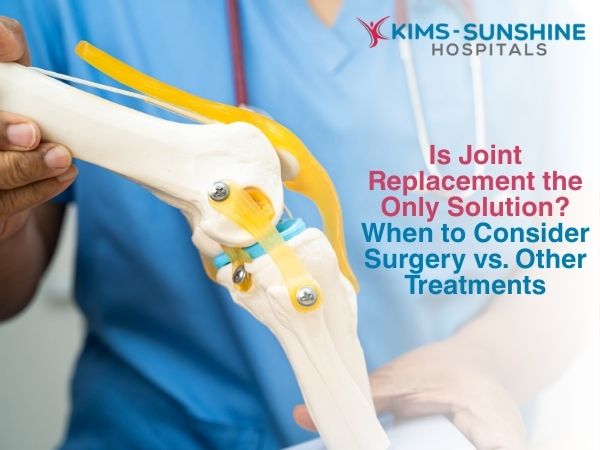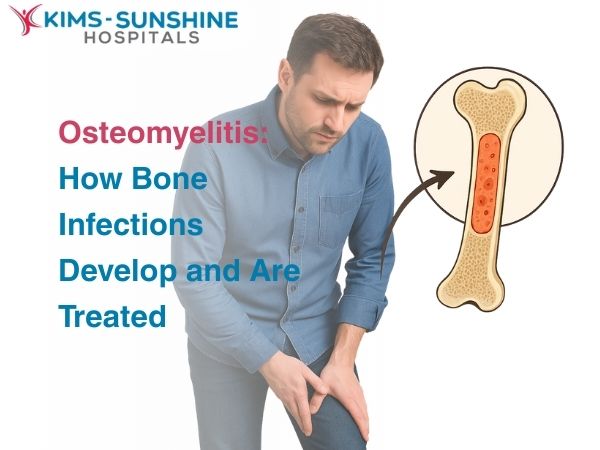
Is Joint Replacement the Only Solution? When to Consider Surgery vs. Other Treatments
Joint replacement surgery or arthroplasty is a medical procedure where the joints that have been damaged due to injury or wear and tear or due to any degenerative condition are replaced with an artificial implant or prosthesis that is made of metal, ceramic or plastic respectively. Joints that get commonly affected include the hip, knee, shoulder, wrist, ankle, etc. But, surgery is never recommended at the first visit. If your quality of life is very poor and all other methods of pain management or treatment have failed, then surgery may be a good option to consider. Your doctor will help you decide what you want to do and before suggesting surgery, they will ask you to look at alternative methods- like physical therapy, massage, acupuncture or injections to help ease pain.
Non-Surgical Treatments For Joint Pain
Let us look at some alternatives to joint replacement surgery below
- Physical Therapy– You will need to do a carefully prepared set of exercises, with guidance from a physiotherapist. These exercises will help improve mobility, reduce pain, improve joint function, flexibility and also help address any issues with muscle strength or stability too.
- Using pain medications like NSAIDs for management of symptoms may be alright, but not always or for a long period of time.
- Hyaluronic acid or cortisone injections- these help address the often asked question – “Are injections a good alternative to joint replacement?” Hyaluronic acid is a naturally present substance in our body and you can think of the injection as supplementing lost reserves in your joints. You can expect better cushioning and motion, especially if you suffer from the early stages of osteoarthritis. Cortisone injections are suggested when you have a lot of pain and inflammation present in the affected joint. It is a corticosteroid and is fast acting and will hence provide almost immediate relief.
- Losing extra weight if you are overweight can be a great blessing for your stressed joints and help reduce pain too.
- Using the right braces or orthotic support devices- These can be customised for you and help with proper weight distribution and provide improved stability. You can use braces even after physiotherapy or injections too.
- Electrotherapy is good for muscles and can improve recovery by helping reduce inflammation in the joint.
- Supplements can be taken- like calcium, Vitamin D, glucosamine, chondroitin sulphate etc. which are good for joint health in general.
- PRP (Platelet rich plasma) or stem cell therapy can be attempted in some instances.
- Radiofrequency Ablation (RFA) and Osteotomy are other possible alternatives.
When Is Joint Replacement Surgery Necessary?
If you have severe joint pain and cannot move normally and your quality of life is severely hampered, even when you try different alternative approaches to take care of your joint, then your doctor may talk to you about joint replacement surgery. With greater advancements in prosthesis quality and type, you can expect to have an improved daily quality of life for at least 15-20 years after surgery. It may be less or more, depending on a lot of other factors but this is the general duration of time you can expect to be pain free and live life normally.
Conclusion
Joint replacement surgery is only suggested when all other management methods have failed. So, talk to your doctor about how severe your symptoms are and what your aims are- because that is also an important factor that is taken into consideration before opting for surgery. Getting the surgery alone is not enough though- you need to be ready and committed to finish physical therapy and rehab afterwards and will need to make a few modifications to your routine. So, think long and hard about what would work well for you and then make the right choice!
Frequently Asked Questions
What is joint replacement surgery?
Are there alternatives to joint replacement for joint pain?
How effective are injections or physical therapy for joint pain?
What is the success rate of joint replacement surgery?
What are the different types of joint replacement surgeries?







